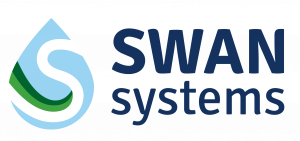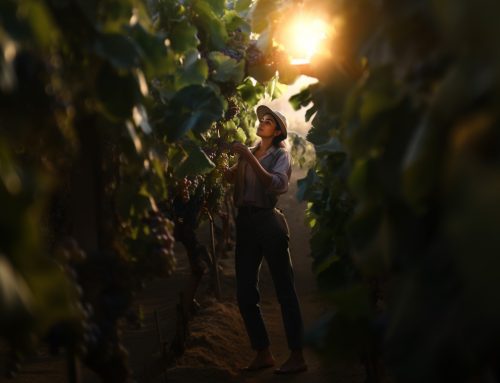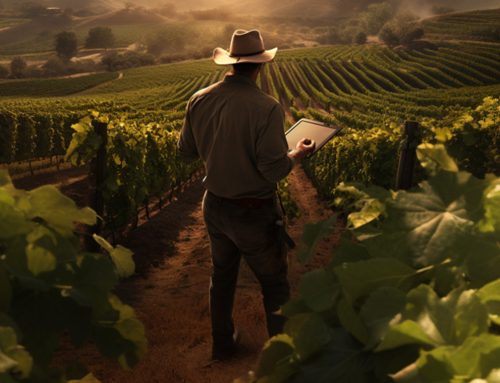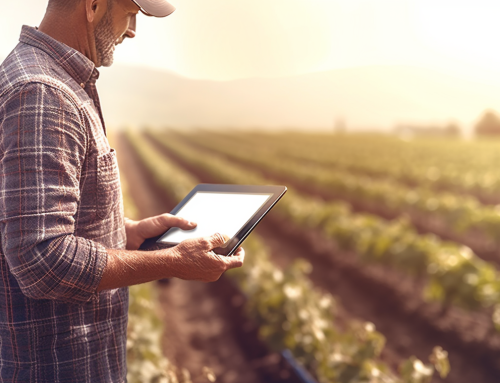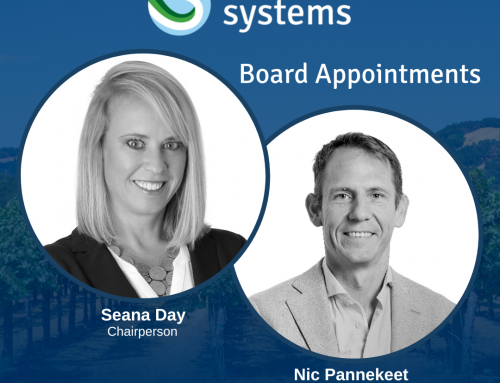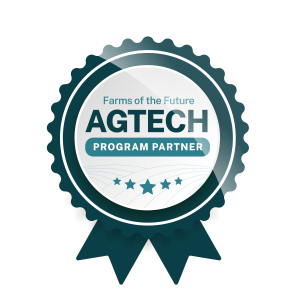Industry Q&A: Precision Irrigation Using Cloud Technology
Article appeared on One Percent by the Water Industry Alliance, October 5, 2017
SWAN Systems’ Tim Hyde spoke with the Water Industry Alliance about SWAN’s beginnings, his recent business mission in India and the future of Australia’s water sector.
SWAN Systems is a cloud-based software platform that utilises technology, data from a range of sources, and scientifically rigorous modelling to predict the upcoming water and nutrient requirements of irrigated crops. It acts as a practical management tool for the optimal scheduling of water and nutrients. By harnessing precision data, the platform delivers user friendly scheduling, tracking and reporting. The technology helps users in all sectors of the irrigation industry, including intensive horticulture, irrigated cropping and public open space.
Tim Hyde is a founding director of both SWAN Systems and AFS Agriculture, a specialist agricultural consultancy firm providing consultancy services to innovative farmers and horticulturalists. Tim has over 25 years of experience in agriculture and horticulture. After university studies, Tim developed and managed agricultural enterprises in the north of Western Australia. In the early 2000s he started growing horticultural crops using precision technology, and since then has focused on adapting the technology to other irrigated crop types.
Tim spoke with the Water Industry Alliance about SWAN’s beginnings, his recent business mission in India and the future of Australia’s water sector.
Tell us a bit about SWAN Systems and the story behind its development…
SWAN is a unique cloud-based platform that gathers data from multiple sources, puts it in the cloud and then runs through a set of algorithms and calculations, specific for your circumstances.
It’s a management tool for irrigators, for managing water and nutrients. It’s very configurable, so you can use it for wine grapes or for citrus, whatever you like.
In 2010 we got involved with a project called the Hamersley Agricultural Project by Rio Tinto.
They had to develop a system to be able to use surplus water from below water table mining for agricultural purposes. The model that SWAN is based on is an automated system that did that. It was about collecting data from water meters, soil moisture probes, satellites and weather stations then running the data through the algorithms and predicting forward, with a very site-specific weather forecast, to calculate water and nutrient requirements.
We developed the systems to do this for Rio Tinto, ran that for five years, and SWAN is essentially that system picked up and put into the cloud, offered as a Software as a Service (SAAS) package.
Rio Tinto had to address a number of environmental compliance requirements, so they had to manage their water and nutrients very precisely, for instance, they were not allowed to leach nutrients into the groundwater, and so to achieve this they avoided irrigating to below 50cm. They also had to consider the nutrients in the background water – and that’s exactly what SWAN does. This is why water utilities are interested in the technology, because SWAN can calculate the amount of each element in recycled water – if there’s nitrates or phosphates in that water – we can actually monitor levels across each element.
Regarding your recent business mission in India, how do you think countries like India are creating real opportunities for the Australian water industry?
There’s no doubt about it, the opportunities are immense in India, really significant. There’s certainly an appetite for corporate agriculture. We were approached by the Tata Group because they want to know more about our technology.
The South Australian Government is proactive about its engagement with India and they have a lot of water technologies to showcase because of the state’s circumstances over the last 20 years. Many South Australian businesses are focussed on water efficiencies, whether it’s planning or monitoring or operating. The South Australian government are helping to promote those businesses globally which is wonderful and there are some really good businesses taking advantage of global opportunities.
A huge issue in India is that only a third of their wastewater is treated, and their water sources can be quite polluted, so there’s a real appetite there within industry to not allow wastewater to enter their river system.
Working with the Confederation of Indian Industries (CII) in treating that wastewater and providing a platform where they can use it for agriculture will be a logical step and in India the private sector seem to be stepping in and taking the reins of what needs to be done.
What do you see as the biggest issues facing our water sector over the next decade? And, with these challenges, what do you see as opportunities for industry and agriculture?
Climate change will be significant – in Western Australia we’ve had a massive reduction in rainfall in the southern regions.
The water efficiency gains over the past 20 years for the Murray-Darling Basin are quite impressive. ‘Hardship is the mother of all invention’ and I think that drives the water industry. As things evolve it will open up a lot more opportunity. In the technology space with satellite monitoring and automated data, SWAN Systems can help monitoring using satellite and there are a lot of opportunities for using this technology with agriculture. The story’s got to be about making life easier, not making it more difficult, that’s our strategy.
Adelaide is a city that’s got challenges. The development in the Northern Adelaide Plains is a good example of having sustainable use of recycled water, which has got nutrients, and making sure it’s not leeching into the aquifers or into the ocean. Good, sustainable use of recycled water is a huge opportunity for the water industry and in this space five Australian utilities are currently using or have shown an interest in SWAN Systems’ technology.
What role did the WIA play in assisting your expansion in SA?
Rachel Barratt and the Water Industry Alliance have been instrumental in assisting SWAN Systems’ expansion into South Australia. I’ve travelled to Adelaide to attend some members’ events and that’s been pretty important.
Last summer we worked on SA Water’s Adelaide Airport Heat Reduction Trial. Because of the way SWAN Systems works we had the ability to backload some data so the project leader can view their performance compared to what the model is saying. The idea with that is you configure the model to your outcomes, and if you put in your last 12 months of data, you can actually go back and see how you performed. This year SA Water wants to work with us on four sites, they want to look at doing a local government site, a school, the airport site again and an agricultural enterprise. We’re happy about that. It will be a pilot project for this irrigation season.
The opportunity for SWAN Systems with local government is a big one. Usually when we do anything with local government there’s a 15 to 20% water saving. With a “set and forget” irrigation plan, often your irrigation is based on 30 year averages. You’ve got to have some sort of centralised irrigation system that allows you to change irrigation volumes quite easily.
There’s a real hub for water technology in South Australia, there’s some great businesses based there and I’m sure our membership will lead to more opportunities with SA businesses.
Article reposted with permission from The Water Industry Alliance. Original article available via http://onepercent.smartwater.org.au/2017/10/05/industry-qa-precision-irrigation-using-cloud-technology/
